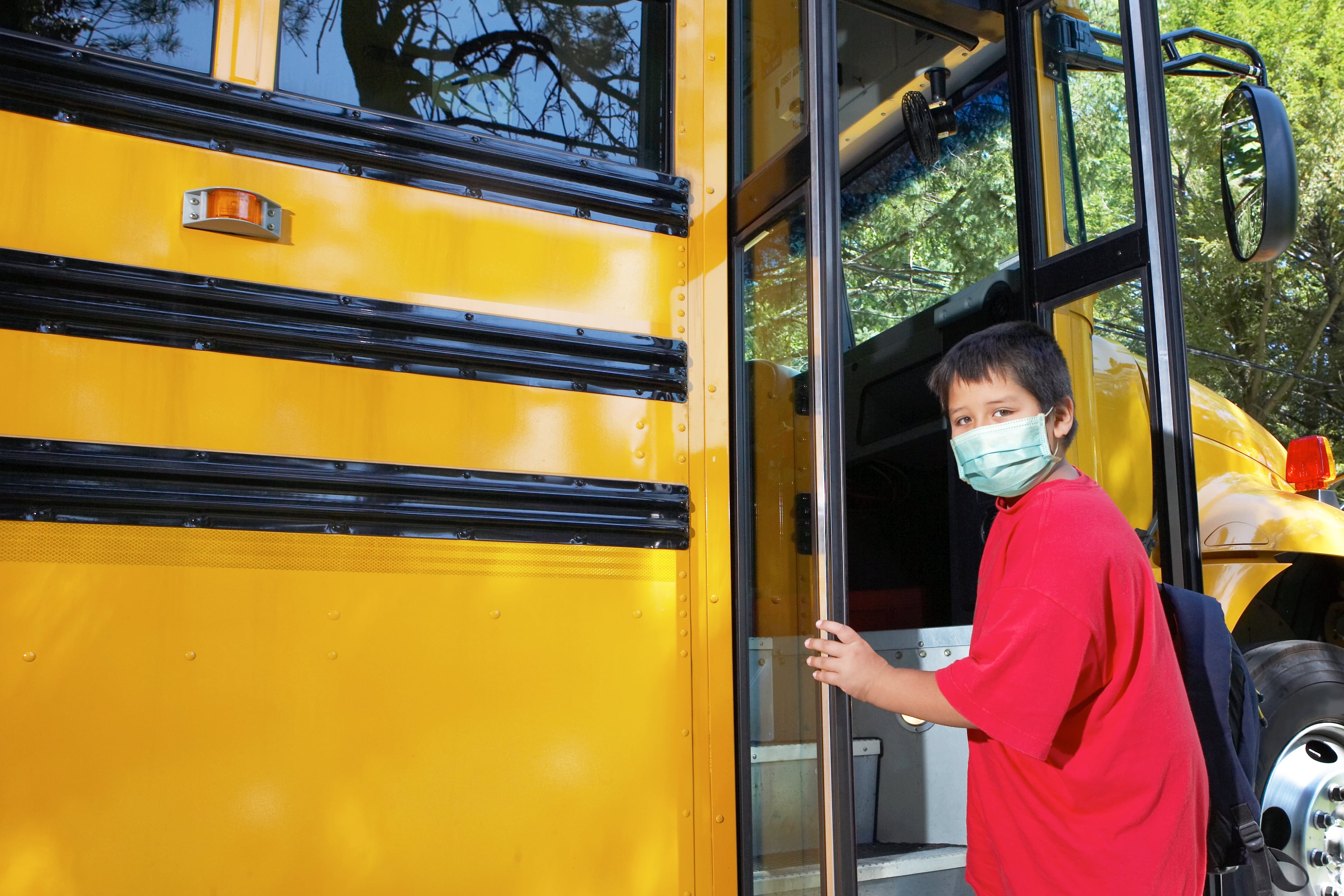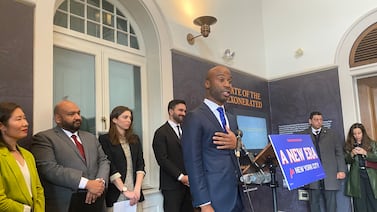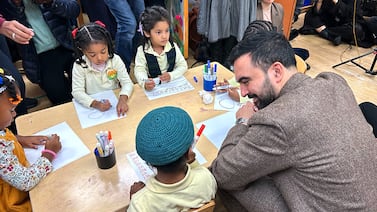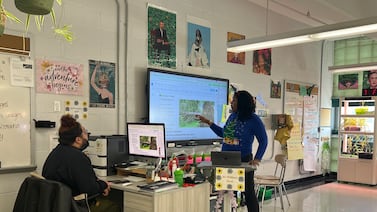Championed by health experts and flouted by the president, the humble face covering has become an emblem of America’s fractured response to the coronavirus pandemic. Now, the mask debate is heading to school.
Who must wear them? Who will provide them? And who will solve the umteen logistical riddles they pose, from cleaning procedures and accommodating students with special needs to redirecting distracted children who tug, scratch, and remove their masks during lessons?
Those are just a few of the questions facing schools as they feverishly plan to reopen even as the virus surges in parts of the country and President Trump threatens sanctions against states that keep students out of classrooms. The answers, like much else about the nation’s chaotic response to the pandemic, have been a head-scratching hodgepodge.
Some states are mandating masks for all students and school employees, heeding guidance from the federal Centers for Disease Control and Prevention that says face coverings should be worn in schools “as feasible” to prevent infected people from spreading the virus. Other states are only requiring masks for staff members and older students or punting the decisions to individual districts, some of which say they will not order anyone to wear face coverings.
Local school officials have been caught in the crossfire. They must decipher evolving and sometimes conflicting state and federal guidance on masks, field competing demands from teachers and parents, and figure out how to pay for the ramped up safety measures with increasingly strained budgets.
“It is confusing,” said Michael Hinojosa, superintendent of the Dallas school system.
This week, Texas issued guidance requiring school staffers and students ages 10 and up to wear masks after inadvertently posting draft guidelines last month that did not mandate masks. Meanwhile, Vice President Mike Pence said Wednesday that the CDC will publish additional guides for districts on reopening schools after President Trump criticized the current recommendations as “very tough” and “expensive.”
“When we have a different ruling from a different agency, then we have to pivot quickly,” said Hinojosa, whose district will exceed the state’s rules by requiring all 154,000 of its students to wear face coverings regardless of their age. “And it’s becoming frustrating for our parents because they’d like to know the specifics.”
After initially waving off the need for masks, U.S. health officials now advise wearing face coverings as evidence mounts that the novel coronavirus can spread by airborne particles. Indoor spaces with limited air circulation, such as schools, pose a significant risk.
While children appear less likely than adults to spread the virus or become seriously ill if they contract it, they are not immune. And the many adults who work in schools — especially those who are older or who have underlying health conditions — face potentially fatal outcomes if infected, making widespread mask-wearing a crucial safety precaution, health experts say.
Except for communities “where you’re almost certain there’s no coronavirus spreading in large parts of it, really everyone indoors needs to wear a mask,” said Dr. Tom Frieden, a former CDC director, on a call with reporters Wednesday. “If everyone wears a mask, everyone is safer.”
While experts make some exceptions — children under age two and those with certain physical restrictions should not wear masks; they also might be less necessary when students are spread six feet apart — the emerging consensus is that mask use in schools is essential. Yet some states are not mandating them.
Florida’s guidelines simply ask schools to “explore strategies to utilize” masks and support “students, teachers and staff who voluntarily wear” them. Indiana’s guidance recommends but doesn’t require employees or students to mask up, while Michigan mandates masks for staffers and students in grades 6-12 but allows younger students to forgo face coverings if they remain in the same classroom all day. Iowa’s education department initially declined to require masks, but said it would revisit its recommendations following a public outcry; the state teachers union said officials were “gambling” with students’ and staffers’ lives.
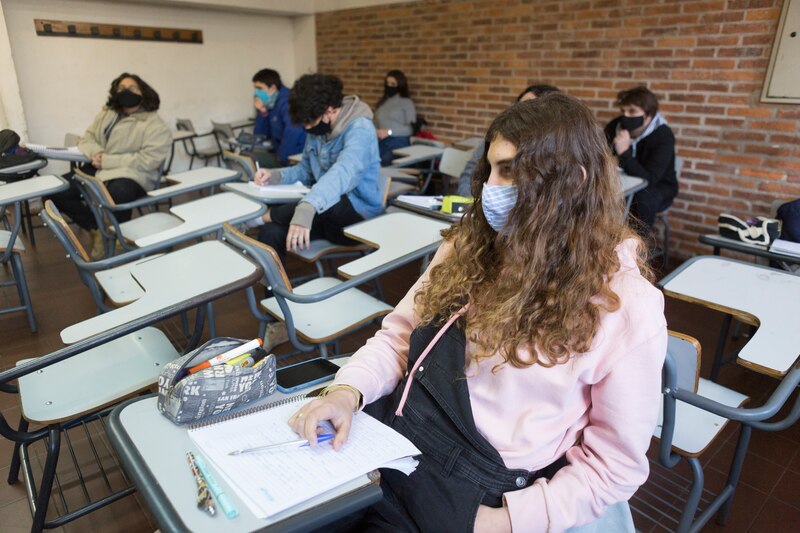
State officials have defended their open-ended guidance on masks, saying it allows individual districts to create plans that are workable and well-suited to local health conditions. But in practice the flexibility has subjected local school leaders to lobbying from all sides — parents in some places are resisting masks, while teachers unions tend to demand them — and left districts scrambling to craft enforceable, medically sound policies.
In Indiana, the Delaware Community Schools district opted to encourage but not require its roughly 2,600 students to wear face coverings during the school day. The decision was based on concerns about the difficulty of enforcing mask use and the possibility that young children might be more inclined to touch their faces if masked, said Greg Kile, the district’s director of assessment, curriculum and student services. The district also weighed feedback from families: More than half of surveyed parents said they wanted masks to be optional, Kile said.
“Beyond a shadow of a doubt, this was the area where we saw the most division,” he said.
Even in states that do advise mask-wearing, some schools have concluded that it isn’t realistic to mandate them. Tennessee’s guidelines say all school employees and students “should” wear masks. But Oneida High School, located in a rural district about an hour north of Knoxville, will give out masks without ordering students to wear them, said Assistant Principal Stacy Love.
Love said students had quickly removed the face coverings they were given at graduation this spring, and many parents she’s spoken with oppose masks or don’t see them as necessary, partly because the area has seen very few infections. Younger students and those with special needs are likely to struggle even more with face coverings, she added.
“In a perfect world, if we were all adults and we could do it and we could manage it — even if it saves one person — we’d want to do it,” she said. “But is it feasible to do within a school system? I personally don’t think so.”
For other districts, the choice to require masks unleashed a torrent of follow-up questions. Will their states pay for face coverings, as Wisconsin, Indiana, and others have promised to do, or will districts foot the bill? Will cloth coverings work, or are clear masks better for communicating? And will the policy expose districts to legal risks?
“If masks are required, can districts obtain the hundreds of thousands needed by students every day?” asked David Aderhold, a superintendent quoted in a recent report by the New Jersey School Boards Association. “If students wear inferior, homemade masks, and the virus spreads, will districts be held liable for any deaths?”
Whatever policies school systems devise, enforcement will fall to individual educators. In Detroit, where the district said it will provide masks, fourth-grade teacher Alaina Larsen expects to start the year going over new skills with her students: how to properly don masks in the morning, store them during lunch, and avoid fiddling with them during class. She’s less sure about other procedures, like what to do if a student removes or refuses to wear a mask.
“That’s a whole other source of problems that we haven’t even talked about yet in the district,” she said. “Will masks become a policy in the discipline plan?” (Anticipating such challenges, Wisconsin’s guidelines advise schools to consider training staff on anti-bullying policies and “implicit bias and racial profiling in the context of COVID-19 and face coverings.”)
Masks could also interfere with learning as teachers and students struggle to hear muffled voices and interpret half-hidden facial expressions. Certain students are especially dependent on seeing their teachers’ faces, including students with autism, those who are deaf or hard of hearing, younger children learning to pronounce words, and recent immigrants still learning English, as Education Week reported.
“I believe wearing a mask that hides your mouth is doing a disservice to students because they would not be able to grasp non-verbal cues from me and they may not completely understand what I’m trying to say,” said Janet, a third-grade teacher in Southern California who asked to withhold her last name because she is part of a group of teachers negotiating reopening guidelines with their district.
To ease communication with students, she and many other teachers plan to wear clear masks or plastic face shields. Some states, including Texas and California, plan to distribute face shields to teachers along with masks. But while experts say face shields offer some benefits — they are transparent, cover the entire face, and are easily cleaned — it is not clear whether they are as effective as masks at containing particles with the virus. The CDC recommends against substituting face shields for cloth coverings.
While schools will certainly face challenges getting everyone to wear masks, that is simply the cost of operating during a pandemic, said Dr. Kenneth Alexander, who is chief of infectious disease at Nemours Children’s Hospital in Orlando. Citing the “overwhelming” evidence for the benefits of masks, he recommends that every school require them.
“To me, walking into a school or a hospital not wearing a mask is tantamount to walking into a school or a hospital carrying a gun or a knife,” he said. “It has real potential to injure somebody.”
Emma Kate Fittes contributed reporting.

